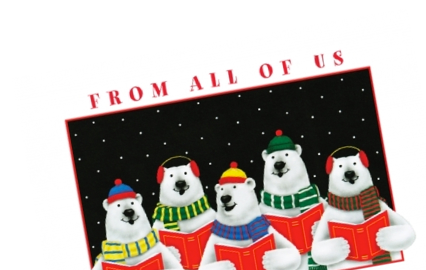Sep 16th 2024
Tips for Hosting a Friendsgiving: Simple Steps for an Unforgettable Celebration
Hosting a Friendsgiving can be a rewarding experience that brings friends together to enjoy good food and company.
Start by planning the menu and asking guests about their dietary restrictions to ensure everyone can enjoy the meal. Having a potluck-style gathering can also ease the burden on the host and let everyone contribute their favorite dishes.
Preparation is key to a successful Friendsgiving. Cut vegetables a day ahead and set up a simple but creative table arrangement to save time on the event day.
Don't forget to stock up on essentials like plates, silverware, and napkins to accommodate all your guests.
A warm, inviting atmosphere makes everyone feel at home. Designate someone to handle small tasks like filling water glasses and setting up a snack table with items like hummus and veggies. This helps keep things running smoothly and allows the host to enjoy the celebration.
Planning Your Friendsgiving
A successful Friendsgiving requires careful planning, including setting a convenient date and time, creating a guest list, deciding on a location, and sending out the invitations with the right etiquette.
Setting the Date and Time
Choosing the right date and time is crucial. Friendsgiving usually takes place in November, around Thanksgiving. It's essential to select a date that works for most of the invited guests.
Consider polling your friends to find a date that suits everyone. Weekends are typically best since most people are off work and can travel if needed.
Plan to start the event in the late afternoon or early evening to allow ample time for cooking, eating, and socializing. Make sure to confirm the date and time with your guests at least a few weeks in advance to give them time to prepare.
Creating a Guest List
When creating a guest list, consider the space available and the type of event you'd like to host. A smaller, more intimate gathering might be preferable for some, while others may enjoy a larger party atmosphere.
Make a list of close friends you genuinely want to spend time with. Also, think about how well your friends know each other and whether they'll get along.
Remember to include people with different backgrounds to make the event more diverse and enjoyable. Keep in mind dietary restrictions and preferences so you can plan the menu accordingly.
Deciding on the Location
Deciding on the location for Friendsgiving is one of the most important steps. Your home is often the easiest choice, but not always the best if space is limited.
Consider asking a friend with a larger space if they would be willing to host. Another option is to rent a community center or event space, especially if you’re planning for a big group.
Make sure the chosen location has enough seating and table space for the meal. If necessary, consider renting extra furniture or arranging for a more casual, buffet-style setup.
Invitation Etiquette
Inviting your friends with proper etiquette sets the tone for the event. Digital invitations work well and are easy to track, but a handwritten invite can add a personal touch.
When sending out the invitations, include essential details such as the date, time, location, and any special instructions like what to bring or a dress code.
It's also helpful to provide an RSVP date so you can plan accordingly. Consider setting up a shared document or chat group where guests can see what others are bringing, ensuring a well-rounded meal. Remember, timely and clear communication is key to a smooth Friendsgiving.
Setting Up the Space
Hosting a successful Friendsgiving in a small space requires careful planning and creativity. Making the most of the available space is crucial, and setting the right atmosphere can enhance the overall experience.
Arranging Furniture
Start by rearranging your furniture to maximize space. Consider pushing larger items like sofas and tables against walls. This creates an open space in the center for easy movement and socializing.
You can temporarily move non-essential furniture to another room or store it temporarily to free up more space.
Use folding chairs or stools that can be easily stored away when not in use. Opt for a buffet-style setup instead of a seated dinner, allowing guests to serve themselves and find a place to sit. This flexible arrangement can help accommodate more people without feeling cramped.
Ensure clear pathways: Keep walking areas uncluttered for easy access. Place items like wall-mounted shelves or hooks to store coats and bags, reducing clutter on the floor.
Decor and Atmosphere
Choose seasonal decor that enhances the cozy feel of Friendsgiving without overcrowding the space. Small touches like string lights or candles can add warmth and ambiance.
Consider a simple table centerpiece, like a vase with autumn flowers or a bowl of seasonal fruits.
Utilize vertical space: Hang decorations on walls or from the ceiling. This keeps surfaces clear for food and drinks, making the room feel more spacious.
Music and lighting: Soft background music can set a festive mood without overwhelming conversation. Use dimmable lights or lamps to create a cozy atmosphere.
Keep decorations simple yet impactful. Ensure guests have enough room to enjoy themselves comfortably while still celebrating the spirit of Friendsgiving.
The Friendsgiving Menu
Creating the perfect Friendsgiving menu involves selecting a theme, considering dietary needs, efficiently preparing food, and coordinating potluck contributions. This ensures a memorable and inclusive event for everyone.
Selecting a Theme
Choosing a theme for Friendsgiving can make the event more cohesive and fun. A theme could be traditional Thanksgiving foods, a specific cuisine like Italian or Mexican, or even a seasonal focus such as fall harvest.
Including a few creative themes like "comfort foods" or "finger foods" can make the event feel more personalized. For a more laid-back vibe, consider a casual potluck where guests bring their favorite homemade dishes. This encourages variety and brings a mix of flavors to the table.
Themes also help narrow down decorating ideas, music choices, and even dress codes, enriching the overall experience. Regardless of the theme, focus on making it enjoyable and manageable for everyone.
Dietary Considerations
Dietary restrictions and preferences should be a key focus when planning your Friendsgiving menu.
Start by asking your guests about any food allergies, intolerances, or dietary choices, like vegetarianism or veganism.
Offering a mix of options ensures everyone can enjoy the meal. For example, having a vegetarian main dish alongside a traditional turkey makes the menu more inclusive. Gluten-free and dairy-free options can also be incorporated effortlessly into side dishes and desserts.
Additionally, labeling dishes with potential allergens, such as nuts or soy, can make guests feel more comfortable. Having a balanced menu that caters to all dietary needs ensures everyone leaves satisfied.
Food Preparation
Planning ahead is essential for a smooth Friendsgiving. Break down the menu into manageable parts that can be prepared in advance. This reduces stress and allows the host to enjoy the event as well.
Consider making casseroles, desserts, and some appetizers the day before. On Friendsgiving day, focus on cooking items that need to be served fresh, like roasted vegetables or pasta dishes.
Using slow cookers and instant pots can also save time and keep food warm until it's ready to be served. Assigning small prep tasks to guests can make them feel involved and speed up the process.
Potluck Coordination
Coordinating a potluck can distribute the workload and add variety to the menu.
Create a sign-up sheet for dishes to ensure a balanced spread of appetizers, main courses, sides, and desserts.
Encourage guests to bring their signature dishes, which can add personal touches to the menu. Providing basic guidelines, like portion sizes and food categories, can help avoid duplicates and ensure enough food for everyone.
Using disposable or reusable containers can simplify clean-up. Lastly, communicating about who will bring serving utensils and dishes can prevent last-minute scrambles. This way, hosting duties are lighter, and the meal is more diverse and enjoyable.
Beverages and Cocktails
Choosing the right beverages and cocktails can elevate any Friendsgiving gathering. Both alcoholic and non-alcoholic options should be considered to cater to all guests' preferences.
Alcoholic Options
For Friendsgiving, pitcher cocktails are a great choice. They are easy to prepare and serve, allowing the host to enjoy the party without constantly mixing drinks.
One example is a Spiced Apple Cider Moscow Mule. This festive drink blends hard apple cider with classic mule ingredients. It presents a fall twist that guests will love (recipe available here).
Another option is a Mulled Wine, which is perfect for cooler weather. In a medium saucepan, combine merlot with spices such as star anise, cinnamon sticks, and cloves. Heat it gently without boiling and serve warm with a garnish of orange slices and star anise (learn more here).
Non-Alcoholic Varieties
Providing non-alcoholic drinks is essential for guests who prefer not to drink alcohol.
A simple yet elegant choice is Sparkling Apple Cider Punch. Combine apple cider with sparkling water and add slices of fresh apple and a few cinnamon sticks for flavor.
Another crowd-pleaser is Hot Chocolate with Toppings. Prepare a big batch of hot chocolate and set up a toppings bar with options like whipped cream, marshmallows, and chocolate shavings. This allows guests to customize their drinks.
For something refreshing, consider a Cranberry Spritzer. Mix cranberry juice with soda water and garnish with fresh cranberries and mint leaves. This drink is visually appealing and tastes great.
Activities and Entertainment
Planning the right activities and entertainment can ensure your Friendsgiving is a hit. Incorporate engaging games and a good music playlist to keep everyone entertained and the mood lively.
Games and Icebreakers
Games are a great way to bring people together. Thanksgiving Family Feud is a fun option where guests split into teams and guess the top survey answers related to Thanksgiving themes.
Another entertaining game is Friendsgiving Bingo, which can be easily customized with Friendsgiving-specific prompts. Each person gets a bingo card, and the first to complete a row wins a small prize.
For a more relaxed pace, try Spicy Uno. Played with a regular Uno deck but with added rules, it keeps everyone on their toes. For those who enjoy some friendly competition, a trivia game featuring questions about each other can be both fun and revealing.
Music and Playlists
Music sets the tone for the evening. Start with a mellow playlist while guests arrive and mingle. Include songs from various genres to cater to different tastes.
As dinner is served, switch to softer, more soothing tunes to allow for easy conversation.
For an energy boost later in the evening, create a playlist of upbeat tracks. This can shift the atmosphere from relaxed to lively and encourage dancing.
Allow guests to add their favorite songs to the playlist during the party. Using a music streaming service that allows collaborative playlists can make this easy.
Consider also having a mini karaoke session for added fun. Equipment like a microphone and a speaker can make this activity seamless.
Hosting Duties
Hosting a Friendsgiving involves key responsibilities like welcoming guests, coordinating the meal, and addressing any issues that arise. These steps ensure that everyone has an enjoyable experience.
Welcoming Guests
Hosting duties start with greeting each guest warmly. A smile and a friendly hello set the tone for the event.
Have a designated area for coats and bags. This keeps things organized and helps guests feel at home right away.
Offer a drink to each arriving guest. Having a welcome drink or a simple beverage station can make the arrival smoother.
Name tags can be useful if not everyone knows each other. This encourages mingling and helps people feel comfortable.
A quick tour of the primary areas, like the bathroom and dining space, is helpful to guests. This reduces the number of questions later and makes guests feel more at ease.
Coordinating the Meal
Meal coordination is central to Friendsgiving.
Plan the menu ahead of time to avoid any last-minute confusion. A potluck style where each guest brings a dish is a popular choice.
Assign dishes to avoid duplicates and make sure all dietary needs are covered.
Using a shared document or app can simplify tracking what everyone is bringing. Make sure to have enough serving utensils, plates, and napkins.
Checking that dishes arrive warm or at a safe temperature is crucial. Preparing a few extra dishes yourself ensures there is plenty of food.
Setting the table in advance can save time. Labeling each dish with ingredients can be very helpful, especially for those with allergies or dietary preferences. This ensures everyone can enjoy the food without worry.
Addressing Issues
Even with careful planning, issues can arise. Address them calmly and efficiently.
If a guest is upset, listen to their concerns and try to resolve them. For food shortages, have some easy snacks or quick dishes on standby.
Allergies or special dietary needs might require some last-minute adjustments. Being flexible and prepared can help in handling these situations smoothly.
Technical issues with music or lighting are common. Keep backup options ready, whether that’s a spare speaker or extra lights.
Having a small first aid kit on hand can also be useful. Addressing minor accidents quickly ensures that everyone can continue to enjoy the event.
Post-Friendsgiving Considerations
After a successful Friendsgiving, there's still some work to be done. Cleaning up, managing leftovers, and sending thank you notes are important steps to make sure everything winds down smoothly and leaves everyone with lasting positive memories.
Cleaning Up
Cleaning up after Friendsgiving can be a big task, but it’s manageable with the right plan.
Start by clearing the table and putting away any perishables to prevent food spoilage. Enlist the help of a few friends to make the process quicker and more enjoyable.
Having enough trash bags and recycling bins on hand will help. For dishes, use a system: some people wash, others dry, and a third group puts items away.
Leftovers Distribution
You’re likely to have plenty of leftovers. An organized system for distributing leftovers among guests ensures everyone leaves happy.
Have containers and ziplock bags ready for packing up food. Prepare labels and markers to write down the contents and date.
Make sure to fairly distribute popular items like turkey and pie to avoid any hard feelings. Encourage guests to bring their own containers if possible. This not only helps in waste reduction but also ensures that everyone has a sufficient share of their favorite dishes.
Leftover boxes can also be an enjoyable parting gift for those at the gathering.
Thank You Notes
Sending thank you notes is a thoughtful way to show appreciation for your guests. Personalized messages can make each guest feel special and valued.
Consider handwriting the notes for an extra personal touch. Digital alternatives, like e-cards or emails, are also effective and can be customized easily.
Mention specific contributions and actions that were particularly helpful during the event. Thank your guests not only for attending but also for any dishes they brought or roles they played in cleaning up.
You can include tips for hosting future gatherings as a fun conversational addition to the notes.
Frequently Asked Questions
This section addresses common questions about hosting a successful Friendsgiving, covering event planning, menu variety, creative activities, task delegation, creating a cozy atmosphere, and managing space and seating.
What are the essential steps for planning a successful Friendsgiving event?
The essential steps include selecting a date that works for most guests and sending invitations promptly.
Planning a menu and shopping for ingredients in advance can prevent last-minute stress. Delegating tasks like cooking and decorating helps ensure everything runs smoothly.
How can hosts ensure a varied and appealing Friendsgiving menu for all guests?
Hosts can ask guests about dietary restrictions ahead of time. Offering a mix of appetizers, main dishes, and desserts will cater to different tastes.
Simple options like a cheese platter with nuts, olives, and fruit can accommodate various preferences.
What creative activities can be incorporated into a Friendsgiving celebration to enhance the experience?
Hosting activities like photo displays using black and white pictures of attendees can add a personal touch. Creating a playlist of favorite songs or organizing games can make the celebration more enjoyable.
Guests can take their photos home as keepsakes.
How should responsibilities and tasks be delegated among guests for a Friendsgiving gathering?
Assign tasks based on each guest's strengths and preferences. One person can handle appetizers, another can be in charge of decorations, and someone else can organize activities.
Sharing responsibilities ensures that no one is overburdened and everything is covered.
In what ways can a host create a cozy and welcoming atmosphere for Friendsgiving?
Using warm lighting, such as fairy lights or candles, can set a cozy mood. Comfortable seating and a well-arranged space make guests feel welcome.
Providing cozy blankets and soft background music can enhance the ambiance.
What are the key considerations for managing space and seating arrangements at a Friendsgiving party?
For a sit-down dinner, ensure that there’s a seat for everyone. If space is limited, consider a buffet-style setup where guests can sit where they find room. Planning the layout in advance helps make efficient use of the available space.


 Business
Business
 Personalized
Personalized
 Holiday
Holiday
 Customer
Customer
 Bulk
Bulk
 Birthday
Birthday
 Thank You
Thank You
 Anniversary
Anniversary
 Sympathy
Sympathy
 Retirement
Retirement
 Christmas
Christmas
 Thanksgiving
Thanksgiving
 New Year
New Year
 Hanukkah
Hanukkah
 Rosh Hashanah
Rosh Hashanah
 Appreciation
Appreciation Merry Christmas
Merry Christmas Happy Holidays
Happy Holidays Seasons Greetings
Seasons Greetings Funny Cards
Funny Cards Religious
Religious Peace
Peace Patriotic
Patriotic Accounting
Accounting Finance
Finance Photo Cards
Photo Cards Foil Cards
Foil Cards Laser Cut Cards
Laser Cut Cards Die Cut Cards
Die Cut Cards Front Imprint
Front Imprint Recycled Cards
Recycled Cards New York
New York San Francisco
San Francisco Chicago
Chicago Los Angeles
Los Angeles Houston
Houston By Animal
By Animal Christmas Tree
Christmas Tree Western/Southwestern
Western/Southwestern Tropical/Beach
Tropical/Beach Winter Scenes
Winter Scenes Budget Cards
Budget Cards Legal
Legal Construction
Construction Real Estate
Real Estate Trucking
Trucking Accounting
Accounting Holiday Phrases
Holiday Phrases







 Fully Custom
Fully Custom  Friendly
Friendly A portion of every card purchased is donated to charity.
A portion of every card purchased is donated to charity.
 Proudly Made
Proudly Made